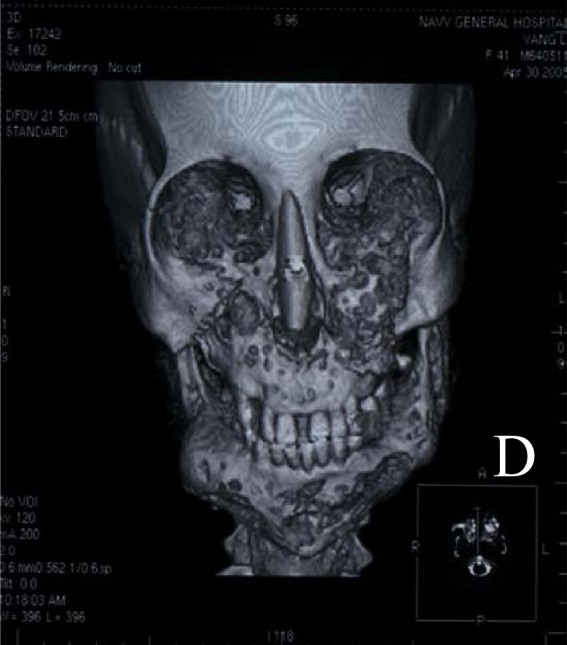Cherubism

Cherubism is a disorder characterized by abnormal bone tissue in the jaw. Beginning in early childhood, both the lower jaw (the mandible) and the upper jaw (the maxilla) become enlarged as bone is replaced with painless, cyst-like growths. These growths give the cheeks a swollen, rounded appearance and often interfere with normal tooth development. In some people the condition is so mild that it may not be noticeable, while other cases are severe enough to cause problems with vision, breathing, speech, and swallowing. Enlargement of the jaw usually continues throughout childhood and stabilizes during puberty. The abnormal growths are gradually replaced with normal bone in early adulthood. As a result, many affected adults have a normal facial appearance.
Most people with cherubism have few, if any, signs and symptoms affecting other parts of the body. Rarely, however, this condition occurs as part of another genetic disorder. For example, cherubism can occur with Ramon syndrome, which also involves short stature, intellectual disability, and overgrowth of the gums (gingival fibrosis). Additionally, cherubism has been reported in rare cases of Noonan syndrome (a developmental disorder characterized by unusual facial characteristics, short stature, and heart defects) and fragile X syndrome (a condition primarily affecting males that causes learning disabilities and cognitive impairment).
Frequency
The incidence of cherubism is unknown. At least 250 cases have been reported worldwide.
Causes
Mutations in the SH3BP2 gene have been identified in about 80 percent of people with cherubism. In most of the remaining cases, the genetic cause of the condition is unknown.
The SH3BP2 gene provides instructions for making a protein that plays a role in transmitting chemical signals within cells. the SH3BP2 protein is particularly important for the function of cells involved in the replacement of old bone tissue with new bone (bone remodeling) and certain immune system cells.
Mutations in the SH3BP2 gene lead to production of an abnormal protein that does not get broken down when it is no longer needed. Too much SH3BP2 protein likely increases signaling in certain cells, causing an immune reaction (inflammation) in the jaw bones and also triggering the production of osteoclasts, which are cells that break down bone tissue during bone remodeling. An excess of these bone-destroying cells contributes to the destruction of bone in the upper and lower jaws. A combination of bone loss and inflammation likely underlies the cyst-like growths characteristic of cherubism.
When cherubism occurs as a feature of a genetic syndrome, it is caused by the same genetic alteration that causes the syndrome.
Learn more about the gene associated with Cherubism
Inheritance Pattern
This condition is inherited in an autosomal dominant pattern, which means one copy of the altered gene in each cell is sufficient to cause the disorder.